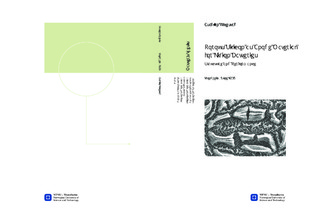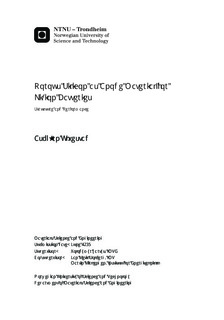| dc.description.abstract | Silicon has proven to have a great potential as anode material in lithium-ion batteries due to its high theoretical electrochemical capacity. However, silicon anodes deteriorate quickly during cyclic charging and discharging, rendering them useless in only a few cycles. This has been attributed to the stresses induced by the large volume change of the material during cycling. By using finely structured silicon, these stresses can be effectively reduced, in what is aptly called dimensional stabilization. Numerous attempts have been made to exploit this effect, e.g. by using nanoparticles, nanorods and nanowires, with a varying degree of success. This study is an investigation into the use of porous silicon for anodes with reduced level of stress. The work consists of two main phases; the formation and characterization of porous silicon, and the testing of the resulting porous structures in electrochemical cells. In addition, an investigation into the use of prelithiated silicon as base material for composite electrodes has been conducted. Porous silicon was obtained by electrochemical etching of n- and p-type silicon wafers in hydrofluoric acid (HF) at different current densities and for different durations. The resulting material was analyzed by SEM to characterize its morphology and pore size. One n-type and one p-type structure were selected for electrochemical testing, involving cyclic charge and discharge in half cells with lithium metal as a counter electrode. The chosen samples were tested both as-etched and with a carbon coating made by a pyrolization procedure with polyacrylonitrile (PAN) as precursor. In a different part of the work, composite electrodes were made from an alloy consisting of the intermetallic phase Li7Si3, carbon black and PAN. These were tested using the same conditions as the porous electrodes.From the SEM analysis, it was determined that porous silicon structures were indeed formed on the wafer surfaces. The p-type wafers are believed to form structures with pores <10 nm. These were too small to be observed in SEM, but other collected data indicate that they do exist. The n-type wafers formed a double-layer structure, which was not expected for the parameters used. The bottom layer was found to be highly porous and consisting of vertically aligned, branched pores, several tens of nanometer wide. The top layer consisted of a framework of random pores less than 10 nm in diameter. The electrochemical testing of the wafer-based electrodes showed that within 8 cycles they reached a capacity close to 3000 mAh/g which remains unchanged on further cycling. The performance is in some part attributed to the solid silicon in the bulk wafers. The porous electrodes exhibited a rather low Coulombic efficiency for the initial cycles, particularly the first, and generally lower efficiency than the non-porous reference. Carbon coating primarily enhanced the Coulombic efficiency of the electrodes, having most pronounced effect on the large surfaced p-type electrode. The n-type structure is believed to have been destroyed in the coating process due to the fragility of the highly porous lower layer. The electrochemical testing of the prelithiated composite electrodes revealed that reversible capacity was very limited. It was concluded that this was due to contamination of the base material, Li7Si3, during its handling after synthesis, despite the extensive preventive measures that were taken. It is thus concluded that extreme care must thus be taken when characterizing the electrochemical capacity of such materials due to their high chemical reactivity. | nb_NO |

